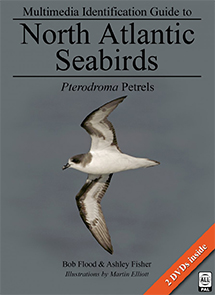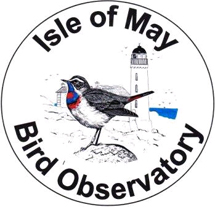Mark Golley's weekly birding round-up: 11 - 17 May 2016
The easterly flow which dominated proceedings last week continued until 12th but thereafter the wind swung sharply into the north and much colder Arctic air replaced the high temperatures of the week before. Winds in the west were light but the east coast received something of an Arctic blast on 13th and 14th. During the remainder of the week the wind swung slowly into the north-west, then the west, bringing by the end of the period a slight recovery in the temperature.
The shift in the weather did little to halt the flow of quality birds, however, and this week proved to be as rarity-rich as the last. The news was dominated by one tiny bird and one enormous bird but there were also lots of other exciting new arrivals whilst some of last week’s stars remained too. As last week, however, the most favoured locations were the far west and the far north although the northern part of the North Sea coast did well too. Only East Anglia fared relatively poorly, missing out on most of the action.
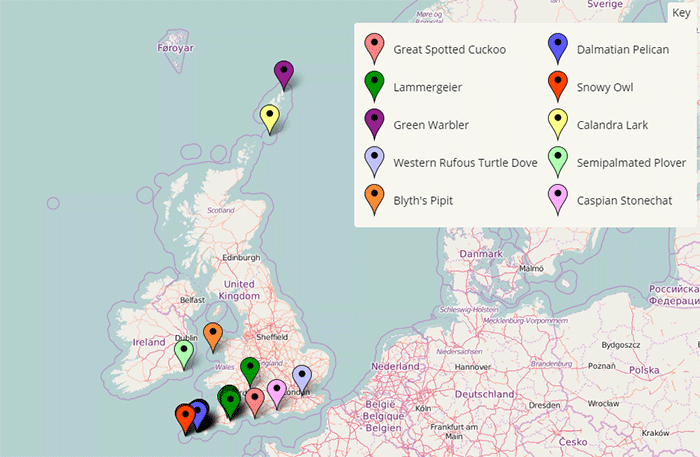
Top billing this week undoubtedly goes to the Green Warbler in the sycamores of the Setters Hill Estate at Baltasound, Unst, Shetland. News emerged from here on 13th of a ‘Greenish Warbler’, very early for this species in spring but, south of Shetland, it raised few eyebrows amidst the torrent of other rare birds. Fortunately, however, the combination of the early date and, more importantly, the bird’s appearance were enough to pique the interest of the finder and first observers.
The first pictures posted online on the morning of 14th were encouraging indeed. Establishing precise subtle plumage hues from images is of course a highly dangerous occupation but clearly the observers felt that the yellow visible in the face and upper breast in the photographs was real and visible in the field too. Differences between spring adult Greenish and Green Warblers are few but at this time of year an obvious yellow wash to the face should place this bird outside the range of any Greenish Warbler. Although fresh autumn Greenishes can look bright with subtle yellow hues in the underparts, spring birds are, by contrast, rather ‘cold’ and ‘grey and white’, and any bird showing a yellow face should really be a Green Warbler. The wing-bar on this bird appeared to be white (fine for spring Green Warbler) and also quite broad (again indicative of Green Warbler, that of Greenish in spring being typically very narrow, sometimes barely visible). Some later photos also suggested that, unlike Greenish Warbler, the supercilia did not bridge the bill base.
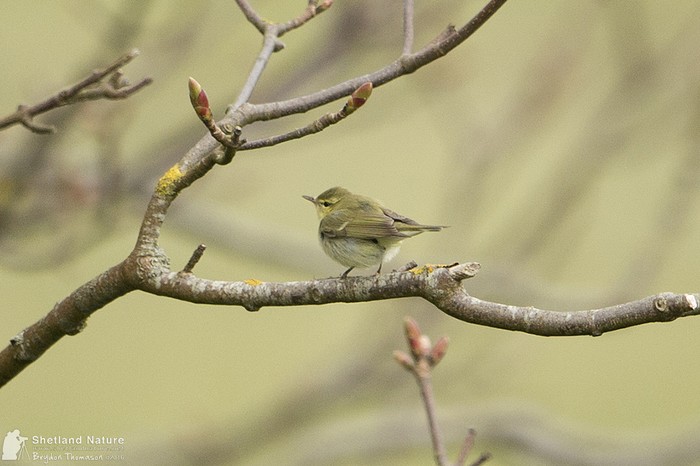
And then came further news, that the bird had been trapped and its identification firmed up. Joy all round! Vocalisations and DNA offer additional potential evidence for a putative Green Warbler, the calls being slightly more trisyllabic than the familiar disyllabic rather cheery and Pied Wagtail-like ‘chi-wee’ of Greenish Warbler but, based on appearance alone, this bird certainly looks the part. Some shed material has been submitted for genetic analysis but it would be surprising indeed if the result was anything other than a nailed-on ‘nitidus’. It was still present on 15th and twitched by some quick off the mark travellers from the mainland and, after an apparent departure on the morning of 16th, it was seen, albeit briefly, that afternoon too.
This is of course a massive find, the only other British record being the long-staying and much-twitched bird on St. Mary’s, Isles of Scilly from 26th September to 4th October 1983. This was the undoubted highlight of an extraordinary late September on Scilly which had already brought Solitary Sandpiper, Bobolink and Northern Oriole from the New World and Arctic Warbler and Thrush Nightingale from the Old. The 1983 bird, a classic fresh autumn individual, fully saturated yellow on the face, underparts and wing-bar, showed very well along the Garrison wall (ah, happy memories!).
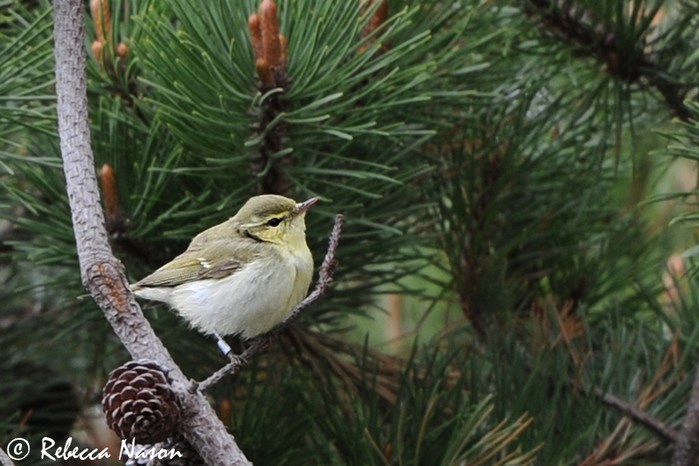
Since then (bar the odd false alarm) the British trail of Green Warbler has gone well and truly cold though it just about retains a presence on the European rarity scene. Of particular relevance is the recently accepted first record for Finland - on 20th May 2012 at Lågskär. Though initially considered to be a Greenish Warbler, this bird showed the identical combination of strongly yellow face combined with a white wing-bar.
Additionally, a Green Warbler was strongly suspected in Suffolk at Sparrow's Nest Gardens, Lowestoft on 9th May 1993. Well described, the coincident date - very early for a Greenish Warbler - is surely most significant.
The species’ first appearance in north-west Europe is well and truly historical, however, appearing amongst the astonishing parade of rarities documented in Heinrich Gätke’s classic 1890 ‘Die Vogelwarte Helgoland’. Here he records the appearance of a ‘Bright-green Tree Warbler’ shot by his son Ludwig on 11th October 1867.
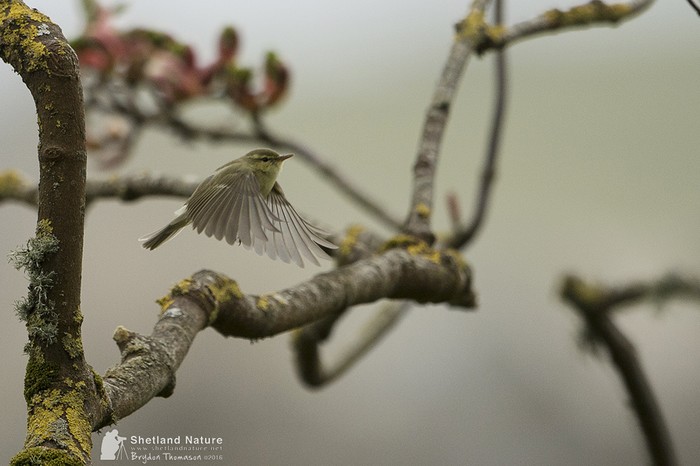
Green Warbler has a highly restricted world range, confined to northern Turkey, the Caucasus and northern Iran and therefore well separated from the extensive Asian range of Greenish and Two-barred Greenish Warblers, the latter sometimes (albeit controversially) regarded as a classic ‘ring species’. With differences in morphology, vocalisations, DNA (and a disjunct range), Green Warbler has been officially ‘split’ for some years though the whole Greenish Warbler group remains something of a taxonomic ‘work in progress’. It’s worth remembering of course that the adoption by BOU of a new global taxonomy for the British List could overturn the current status quo for either or both of Britain’s rarest ‘Greenish Warblers’.
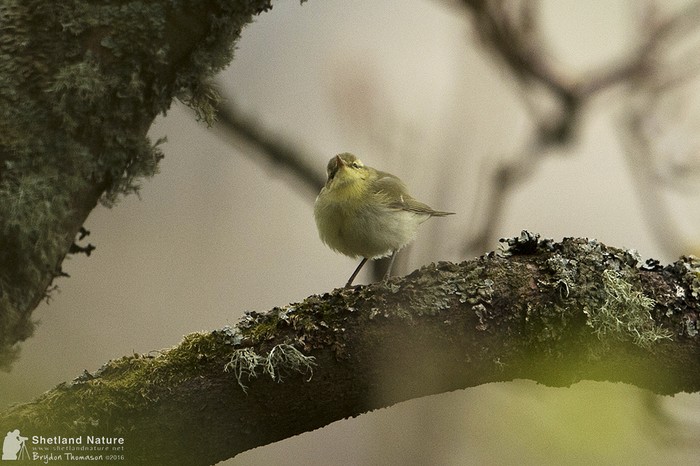
Even more shocking perhaps was the news on 15th that a young Lammergeier had been seen and also filmed at Sudbrook, Gwent, right next to the Severn Crossing, on 12th. The bird had been on the ground before flying off east and then turning west to disappear inland. For any disbelievers, the video footage was immediately compelling, showing at first a somewhat anonymous ‘big dark bird’ sitting on a rock but subsequently transformed into an obvious Lammergeier, complete with enormous wings, giant diamond-shaped tail and superbly fluid and majestic flight.
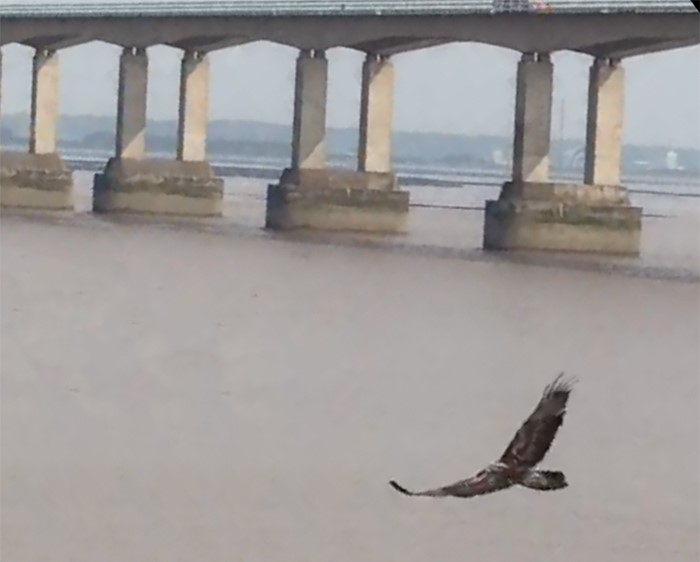
More details emerged later. The bird had been filmed by Dale Kedward whilst walking along the shore of the Severn Estuary with his son and dog. He had noticed a particularly large bird perched on the rocks ahead and, realising that it was much larger than anything he was used to seeing, started to video it. The following day, and still not sure what he had seen and recorded, he got in touch with a birding friend, Andrew Mason who, with the help of the County Recorder, identified the bird as a Lammergeier, presumably the bird seen and photographed in West Flanders, Belgium on 9th May.
That was that until the early afternoon of 16th when it hit the headlines again, now on Dartmoor, Devon, flying north-east near Avon Dam Reservoir at 1135 and then, at 1524, seen just north of Dartmeet at Yar Tor, from where it flew north. News then emerged on 17th of a further sighting the previous evening two miles east of Postbridge over Soussons Down and, before that, a late morning report over Buckfastleigh. On 17th, however, the trail went cold again until it was reported again at 1530, again on Dartmoor, flying over near Princetown at North Hessary Tor.
This is of course a potential new bird for Britain but unfortunately things are not necessarily totally straightforward. The source area could either be the Pyrenees or, much more likely, the Alps, where a reintroduction programme has been in operation since 1986. A bit of googling about this programme reveals that since 1997, when the first breeding pair successfully raised a chick in the wild, as many as 150 wild-born Lammergeiers have fledged, including at least 20 in 2015 (from 34 pairs), indicating that this programme is enjoying considerable success. Fuller details are at www.4vultures.org/our-work/reintroduction
Further googling reveals that at least twenty-six young Lammergeiers have been fitted with satellite transmitters between 2004 and 2015. These individuals have wandered widely, mainly within the Alps, but four birds have travelled much further. These are ‘Schils’ (which has reached Belgium and Holland), ‘Bernd’ (which has reached northern Germany, the Czech Republic and Poland), ‘Scadella’ (which has reached central Germany) and ‘Sardona’ (which has reached Belgium and the north French coast in Brittany). This clearly indicates the propensity of young pre-breeding age birds to wander over considerable distances and suggests that the species could certainly reach Britain. These transmitter-bearing birds are, however, direct releases, reared in captivity, not wild-born birds though of course the latter will be just as capable of wandering too.
How much interest should be taken in the current bird in Britain therefore presumably depends on whether it is a wild-bred bird or one of these transmitter-carrying birds. Unfortunately, the transmitters are hard to see. They are attached either to a tail feather or around the hips but in either case they are practically invisible, with only a short thin antenna poking through the feathers. To complicate matters further, a number of the transmitters have fallen off. Any rings might be visible, however, and these birds are also reported to have had their flight-feathers bleached, allowing them to be identified in flight (although these will of course ultimately moult out). Full details of this programme and life histories of all the marked birds can be read at the ‘Bearded Vulture: Reintroduction into the Alps website’.
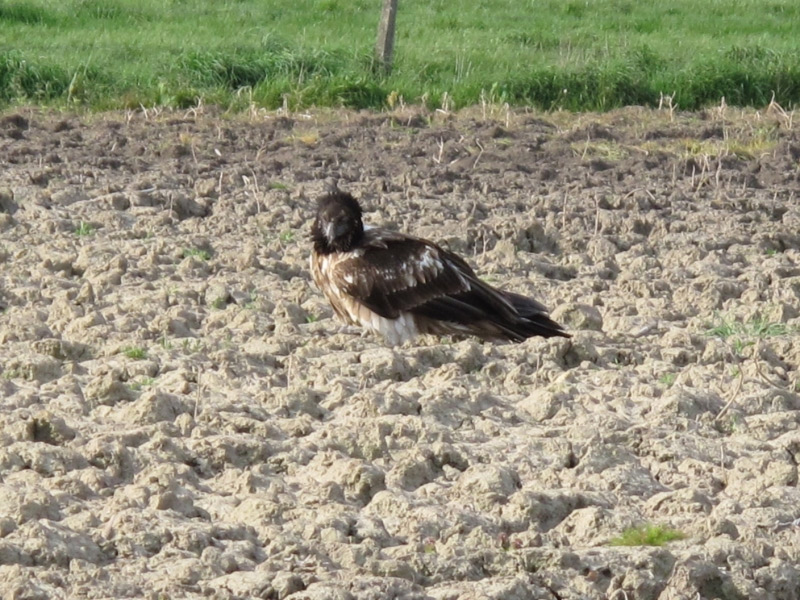
Quite what any of this means for BOURC categorisation and for potential twitchers remains to be seen. Accurate ageing of this bird and close views must provide the best chances of establishing its credentials. It certainly looks like a first-summer and, at least on the views so far, has not shown any obvious rings, transmitter antenna or bleached feathers. This certainly loads the evidence in favour of a wild-bred bird but even if it can be proved to be wild-bred, can it (yet) be described as being from a self-sustaining population? There are lots of questions here for records committees and listers but at this early stage no immediate answers. More information will doubtless emerge as the story unfolds.....
In the meantime, however, the bird is still out there and, whatever its origin, it’s surely a terrific bird to see in Britain. Predicting where it might go next is of course fraught with difficulty but might it end up in Penwith, the ‘catching box’ of the huge ‘Heligoland trap’ that is Southwest England?
Two of the week’s other remarkable birds were both found on 11th. The first news to break concerned a relatively briefly but well seen first-summer Semipalmated Plover at the legendary Tacumshin, County Wexford. Found by Killian Mullarney and seen by a small number of birders, Kilian also managed photograph the bird, this is a remarkable record and find, indeed, only the seventh ever for Britain and Ireland and, apart from the long-staying/returning bird at Dawlish Warren, Devon in 1997-98, the first outside the autumn period. It wasn’t heard to call, nor were palmations seen, but the photographs undeniably show a tiny, compact ‘ringed plover’, small-billed with a narrow but complete breast band and white reaching above the gape line.
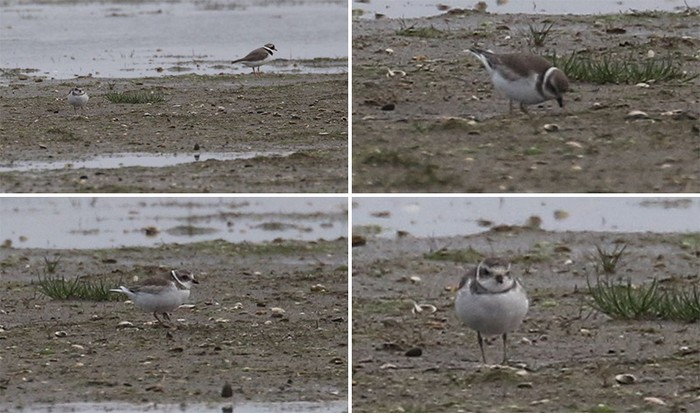
Just as surprising and just as impressive was the subsequent news of a Blyth’s Pipit on Bardsey, Gwynedd on 11th. This was also well seen and very well photographed, the images showing to perfection its rather petite proportions, pale lores, lightly streaked upperparts, clean underparts with peachy flanks and, really helpfully, a short hind claw. Still a very rare bird, this is only the third for Wales, the first also being on this wonderful island on 16th to 17th October 2005. More significantly, however, it is the first spring bird anywhere, all the others being in late autumn or, on one occasion, winter.
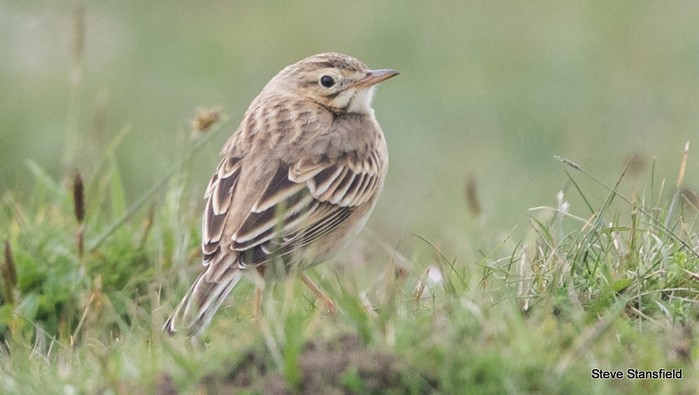
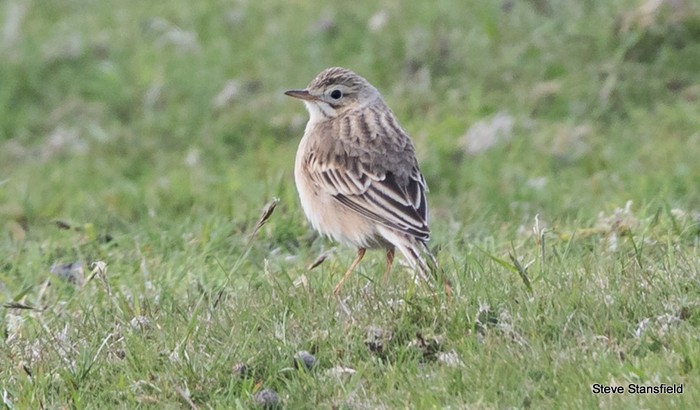
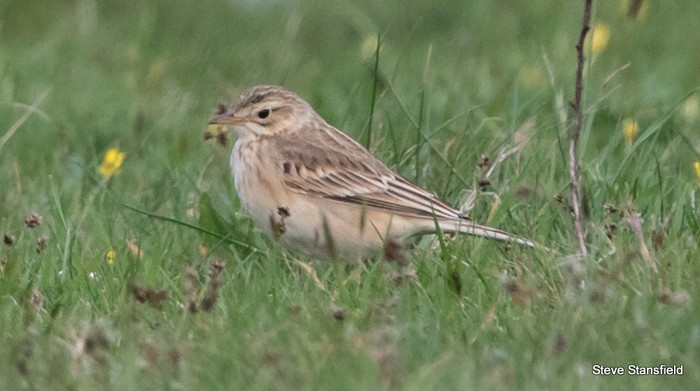
Equally surprising given the season was the Fea’s/Zino’s Petrel seen heading north past Flamborough Head, Yorkshire on the morning of 14th. Although this species has now amassed 61 records to the end of 2014 (including at least 17 in Yorkshire), this is the first spring record here or indeed anywhere, the other earliest records being on 11th June 1996 off Gwennap Head, Cornwall, at sea off Shetland on 25th June the same year and at several sites in north Norfolk on 26th June 1997.
Not one of the above birds was twitchable by the masses but the first-summer Great Spotted Cuckoo at Portland, Dorset on 13th to 17th was a different story. Found at Wallsend, it subsequently showed very well around the Reap Lane, observatory and Top Fields area, munching moths and showing itself off to birders and photographers alike. Perhaps surprisingly, this was only the third for this south coast county, following birds at St. Alban’s Head in March 1989 and Hengistbury Head in April 1994. It is therefore a very welcome new bird for Portland, the county’s top rarity site.
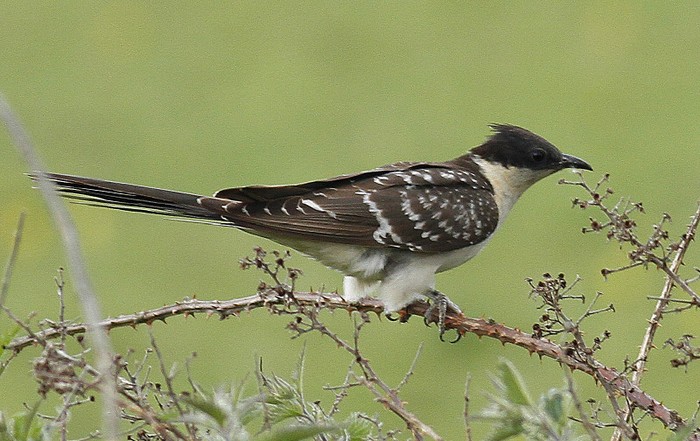
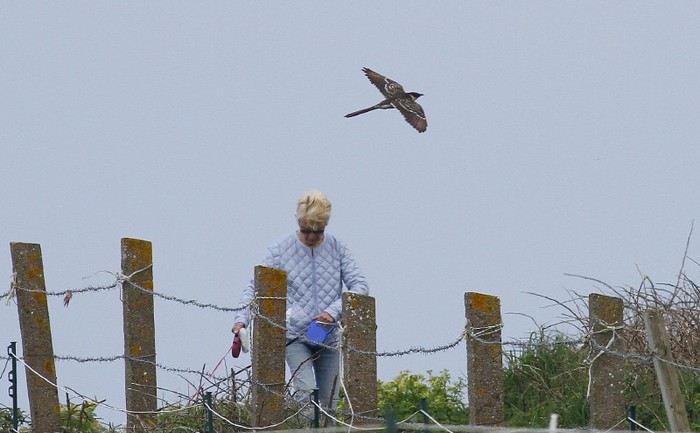
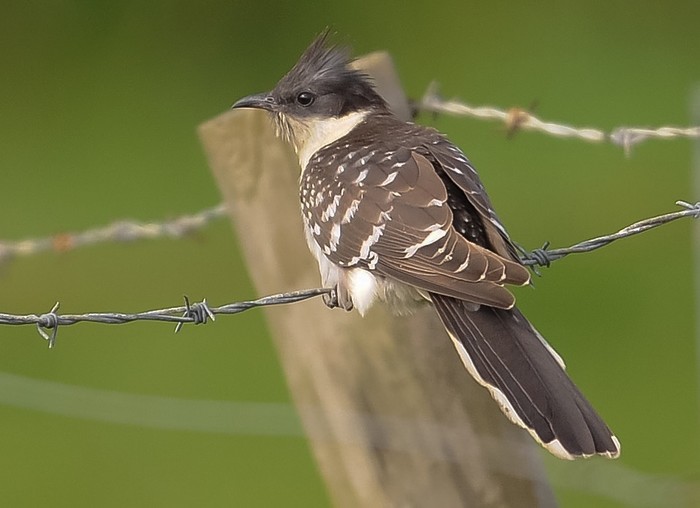
The final new ‘headline bird’ for the week is the male Black-headed Wagtail at Skinflats, Forth on 12th, still a very rare bird (with only 18 records to the end of 2014 - the same as Calandra Lark) but the fifth this spring, following earlier individuals at Swillington Ings, Yorkshire, Titchwell, Norfolk, Whitesands, Pembrokeshire and Rhyl, Denbighshire. This year is therefore by far the best ever for this highly attractive subspecies. Where, however, are the (rather distinctive) females?
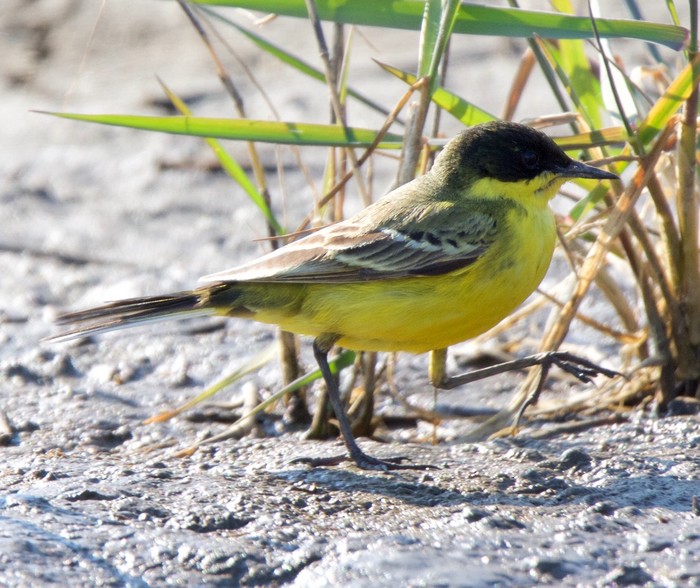
Amongst the ‘leftovers’ from last week, the first mention must go to the stunning male (and apparently adult) Caspian Stonechat at Titchfield Haven, Hampshire, showing well all day on 11th but gone by the next morning. Nevertheless this was the best chance yet to twitch this highly distinctive subspecies. The bird on St. Agnes in November 2013 lingered for ten days but, being on the mainland, this Hampshire individual must have attracted many more visitors.
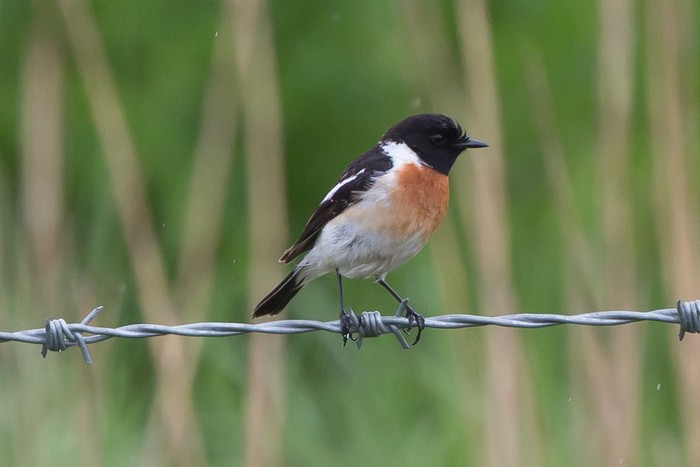
Interestingly, another male Caspian Stonechat was found on the island of Bornholm, Denmark on 11th, perpetuating an increasing trend of discoveries in north-west Europe. For a subspecies with quite a small world range, its occurrence so far to the north-west might seem surprising but records do seem to be increasing. We have presumably been overlooking them in the past, however, either as ‘just’ nominate maurus Siberian Stonechats or perhaps even as bright rubicola-type European Stonechats. Clearly any bright male Stonechat in May deserves an extra close look (and, as with Black-headed Wagtail, what about females?).
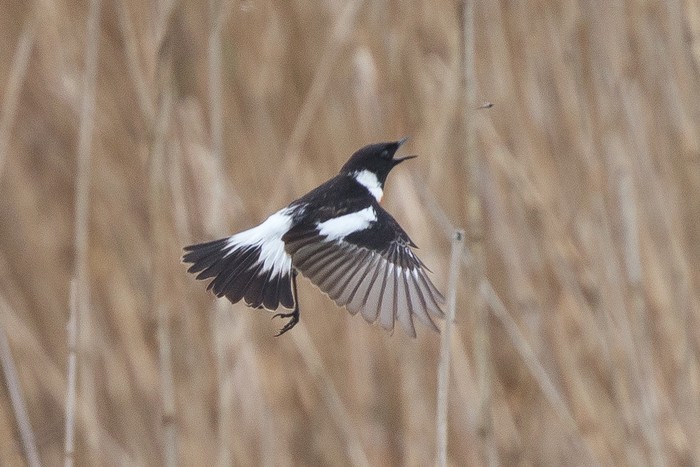
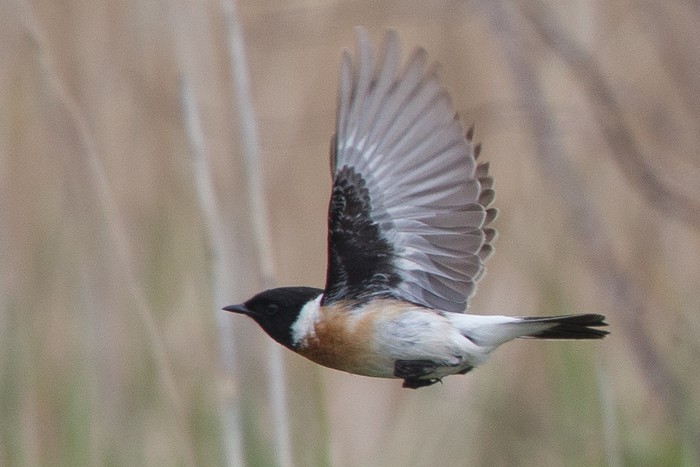
On Fair Isle, the Calandra Lark was still present to 13th. This species therefore continues its strange habit of mainly visiting islands. Of the 18 records to the end of 2014, only four have been at a mainland site. Fair Isle is, perhaps surprisingly, still the classic location for this species. This is now the sixth for this magical island, a third of all records anywhere.
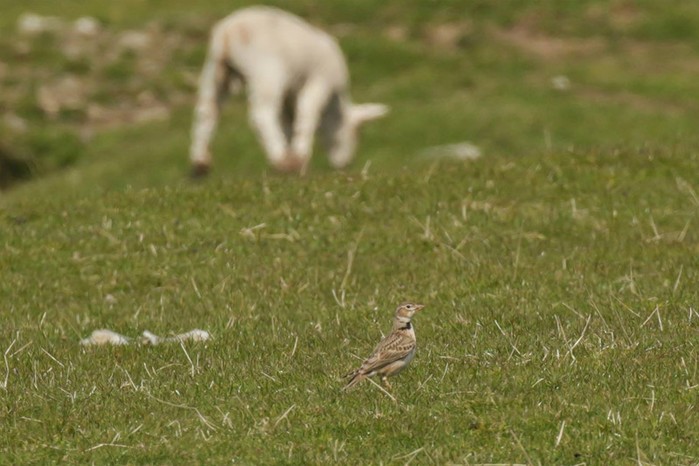
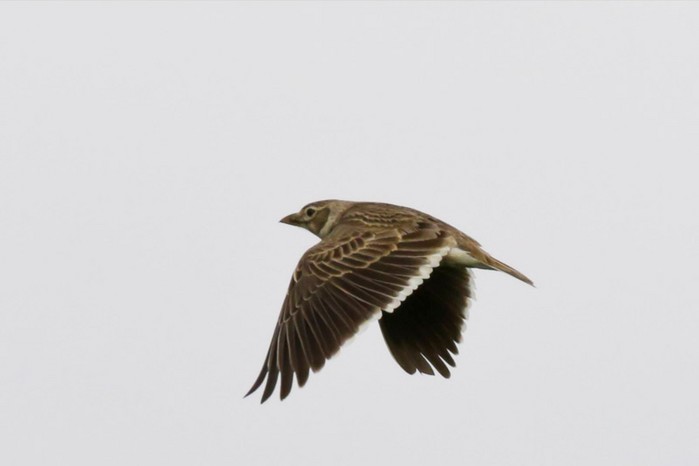
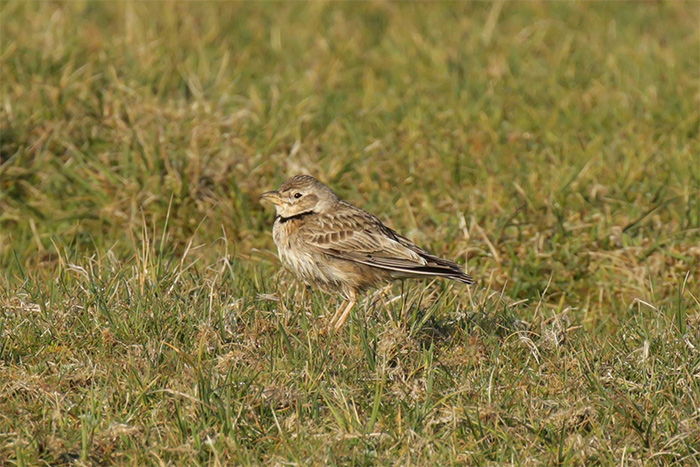
Also lingering from the previous week was the splendid male Snowy Owl on the Isles of Scilly. He got a bit more fidgety this week, first visiting Gugh and then St. Mary’s, St. Martin’s and Tresco but by 14th he was back to Bryher, having completed a grand tour of all the main islands. On 15th, however, he was off again, this time over to Tresco and still shuttling between there and Bryher to 17th.
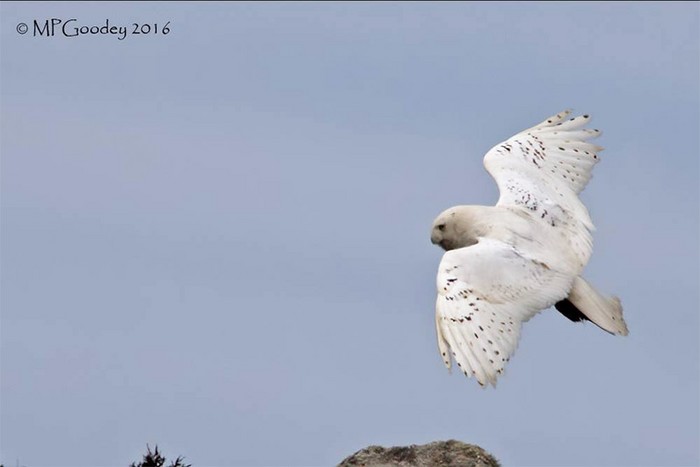
This all-islands tour took the Snowy Owl past Scilly’s other really good bird of the spring - the Iberian Chiffchaff - still present on Tresco to 16th. Another was at the London Wetland Centre on 11th to 17th.
In the Southwest the other remaining ‘star’ (and the quote marks are deliberate) was of course the Dalmatian Pelican , still stuck in Penwith, the ‘toe’ of Cornwall, to 17th. Reports were now inevitably fewer, initially mainly of it in flight in the Porthgwarra/Skewjack/Nanjizal/St. Buryan/Polgigga area but later favouring (and roosting at) Drift Reservoir and finally, on the evening of 17th, circling over Penzance.
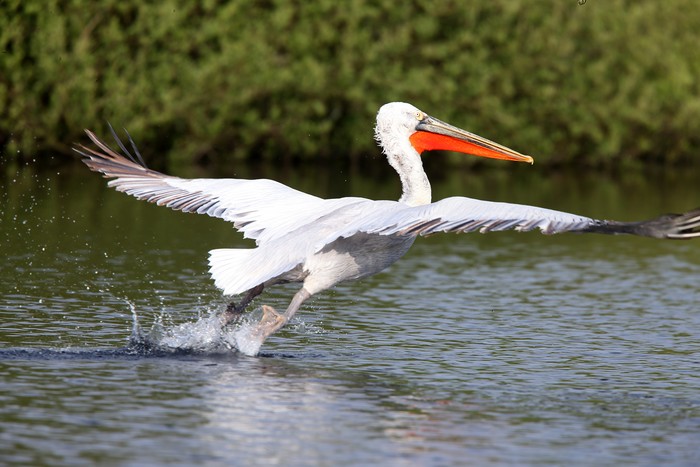
Needless to say, the debate over its origin goes on and on but it seems fair to say that the initial burst of excitement seems to have tempered a little. The known presence of wandering escapes in northern Europe clearly clouds the issue and the question now is whether it is one of these birds or a genuine wanderer.
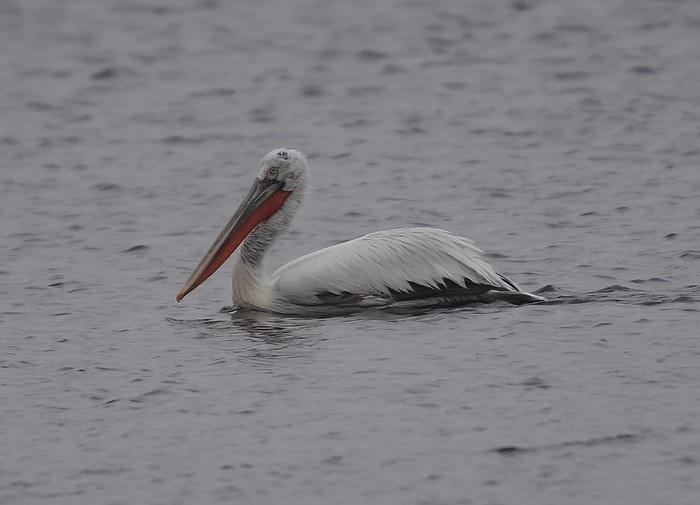
Finally, the long-staying Western Rufous Turtle Dove was still in Otford, Kent to 12th but was not reported thereafter and it has presumably now gone. Although initially playing a long game of ‘hard to get’, this bird eventually lingered long enough to be widely appreciated and its departure will not have caused too much disappointment.
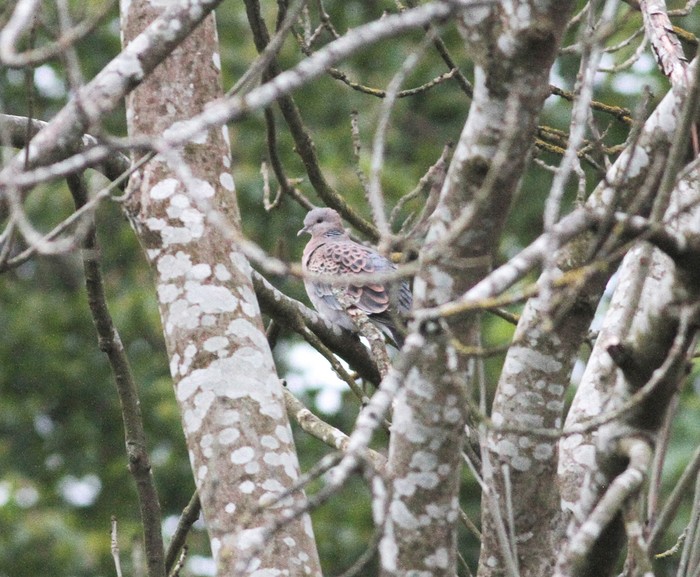
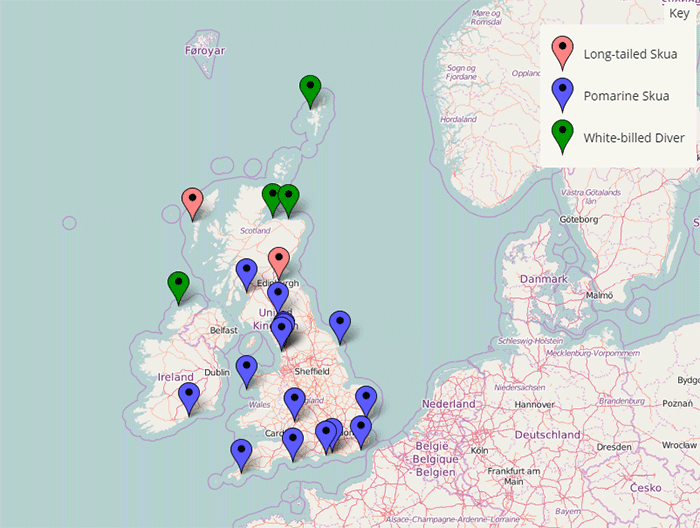
Seabird activity was, as usual in May, dominated by northbound White-billed Divers and Pomarine Skuas . One of the former was at the now traditional location of Portsoy, Aberdeenshire to 14th, with another still at Burghead, Moray to 12th whilst, more unusually, three were off Tory Island, Donegal on 12th and 13th and another flew past Esha Ness, Mainland on 13th.
Pomarine Skua passage was weak with the only ‘up Channel’ records involving singles past Dungeness, Kent on 11th and 13th, Selsey Bill, Sussex on 11th, an ‘at sea’ bird off Rustington, Sussex also on 11th, one in Falmouth Bay, Cornwall on 13th and five past Portland, Dorset and a single past Dungeness on 17th.
Elsewhere, North Sea records involved birds at Frinton on Sea, Essex on 12th and Flamborough Head, Yorkshire on 13th. Most of the action was in the west, however, with three past Fleetwood, Lancashire on 12th and two at Saul Warth, Gloucestershire, one past Heysham, Lancashire and four past Bowness on Solway, Cumbria on 13th and a single past Bardsey, Gwynedd on 14th. On 15th singles passed Ram Head, County Waterford and Saltcoats, Ayrshire with two in Morecambe Bay, Cumbria whilst others passed Heysham and Saltcoats on 16th. Eight passed Bowness on Solway on 17th, the highest count of the week. For once there were no reports off the Western Isles where the winds remained light. The only Long-tailed Skua reported was in the Firth of Forth on 14th.
The only wildfowl interest of the week involved the long-staying King Eiders still at Newburgh, Aberdeenshire and Achiltibuie, Highland and the first-winter Surf Scoter still at Filey, Yorkshire to at least 16th with another on Unst, Shetland on 17th.
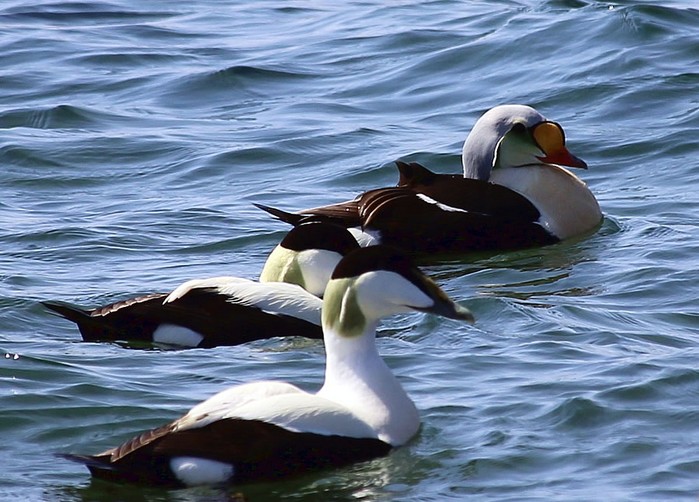
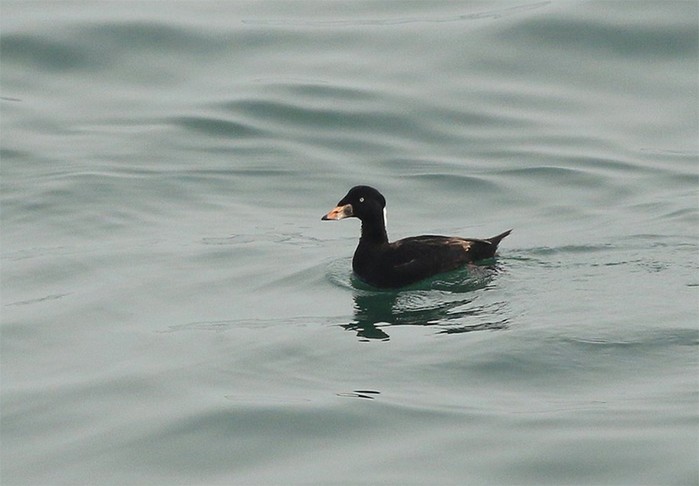
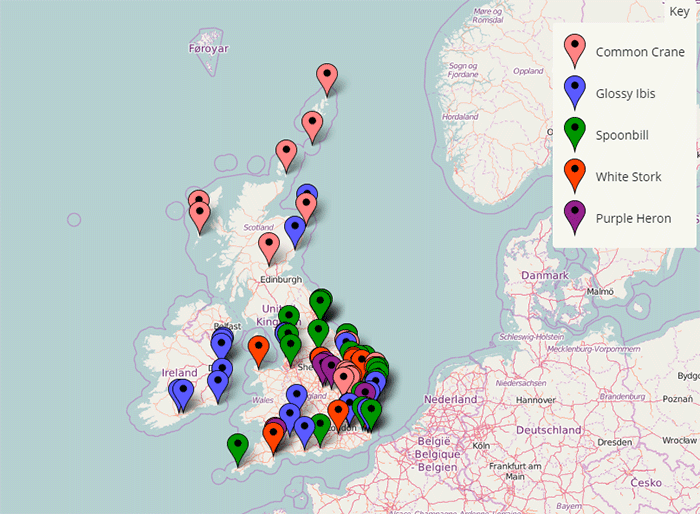
Glossy Ibises were well scattered to all corners of Britain with singles at Lytchett, Dorset to 13th, Marshside, Merseyside to 16th, Montrose Basin, Angus to 16th, Manby Flashes, Lincolnshire on 12th, Ham Wall, Somerset on 12th to 17th, Slimbridge, Gloucestershire and Rainham Marshes, London on 13th, Walton on the Naze, Essex on 14th, Stodmarsh and Grove Ferry, Kent on 15th, Loch of Strathbeg, Aberdeenshire on 16th and Slimbridge, Gloucestershire on 17th.
In Ireland three were at Cahore Marsh, County Wexford on 13th and 14th, Dublin, County Dublin on 13th, Lady’s Island Lake, County Wexford on 13th, Midleton, County Cork on 15th and Rogerstown and the Swords Estuary, County Dublin the same day.
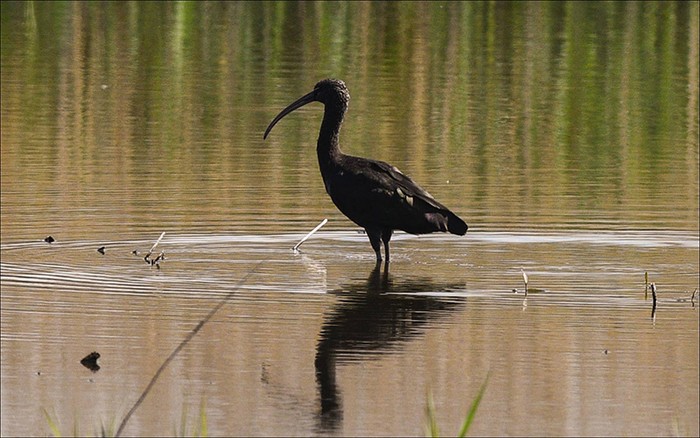
It is becoming increasingly difficult to distinguish potentially wild White Storks from the endlessly circulating pool of escapes but those well away from the Norfolk ‘escape zone’ were at Newton Abbot and Exeter, Devon on 11th, Mona, Anglesey and Clifton, Nottinghamshire on 12th, Dorking, Surrey on 14th and Swalecliffe and Grove Ferry, Kent on 16th.
Great White Egrets were also well scattered, with singles logged as follows: Inner Marsh Farm, Cheshire and Wirral on 11th, Collieston, Aberdeenshire to 13th, two at East Farleigh, Kent on 11th, Drift Reservoir, Cornwall to 13th, Walberswick, Suffolk on 11th, Rainham Marshes, London on 12th and 15th, Shapwick Heath, Somerset on 12th, Druridge, Northumberland on 13th to 15th, Wykeham Lakes, Yorkshire on 13th and 15th, Ouse Washes, Burwell Fen and Wicken Fen, Cambridgeshire and Wheldrake, Yorkshire on 14th, Strumpshaw, Norfolk and Spurn, Yorkshire on 15th, two at Radipole, Dorset, Antony, Cornwall and Ham Wall, Somerset and singles at South Huish Marsh, Devon and Loch of Strathbeg, Aberdeenshire on 16th and singles at Alkborough Flats, Lincolnshire and Holme, Norfolk on 17th.
In Ireland birds were at Lissagriffin, County Cork to 12th, two at Tacumshin, County Wexford on 14th, near Wicklow, County Wicklow on 13th and at Lady’s Island Lake, County Wexford on 13th to 15th.
Purple Herons have been scarce this spring but singles were at Exminster Marshes, Devon on 11th to 13th, Cossington Meadows, Leicestershire on 13th, Grimston, Leicestershire and Attenborough, Nottinghamshire on 14th, Grove Ferry, Kent on 15th and St. Osyth, Essex on 17th.
Well away from breeding areas, four Common Cranes were on Benbecula, Western Isles on 12th, with two at Loch of Strathbeg, Aberdeenshire on 14th and Slains Pools next day, also one on South Ronaldsay, Orkney on 14th to 17th, Fair Isle and Unst, both Shetland, South Uist, Western Isles and Carsebreck, Perth and Kinross on 15th and three over Spurn, Yorkshire on 16th.
Away from the north Norfolk breeding population, around twenty Spoonbills were noted, the greatest number being up to five in Cleveland in the Saltholme/Seaton Carew area.
Spotted Crakes were heard on St. Mary’s, Isles of Scilly on 11th and at Leighton Moss, Lancashire on 12th and 16th at least. Away from breeding locations, Corncrakes were at Portbury, Somerset, Fair Isle, Shetland and North Ronaldsay, Orkney on 12th, at Brighton, Sussex on 13th and on Fair Isle again on 15th.
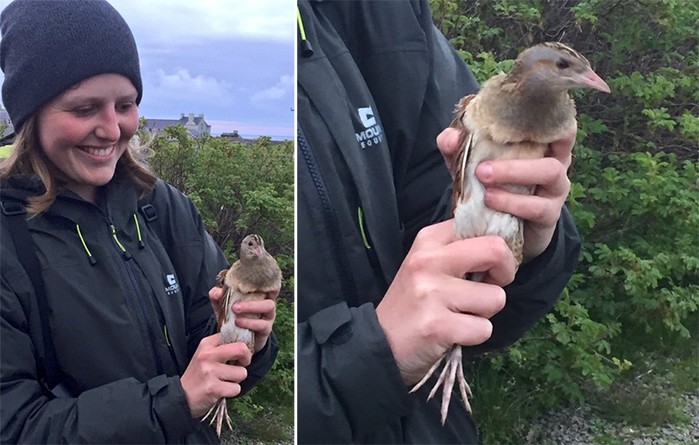
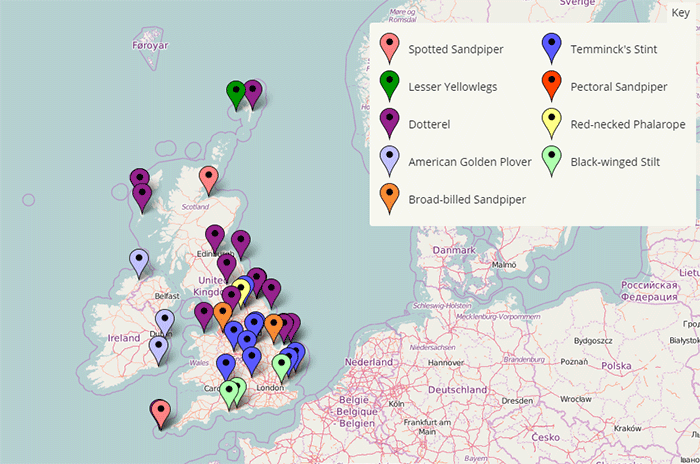
The wader highlight was the appearance of two Broad-billed Sandpipers , the first at Frampton, Lincolnshire on 12th to 14th and then another at Hale, Cheshire on 12th, also reported on 13th. This species is now of somewhat erratic appearance compared with its heyday in the 1980s. It also seems to be appearing more at ‘non-traditional’ locations, with the old reliable sites such as Norfolk’s Breydon Water now largely abandoned. Other top wader finds were nice spotty Spotted Sandpipers at Findhorn Bay, Moray on 16th and on St. Mary’s, Isles of Scilly on 17th, whilst a Lesser Yellowlegs was reported from Foula, Shetland on the latter date.
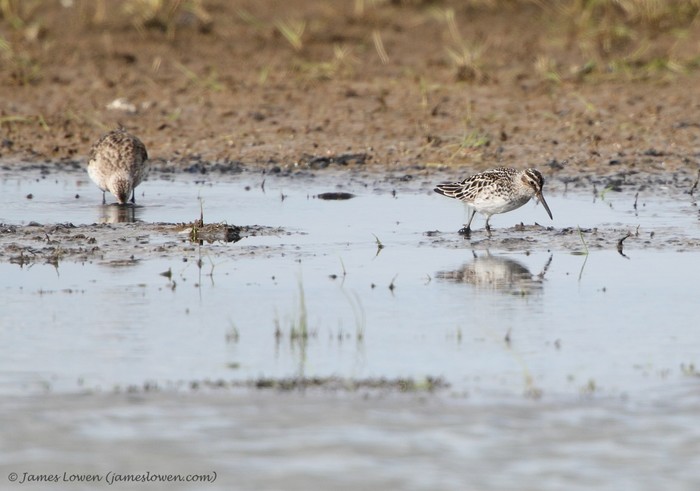
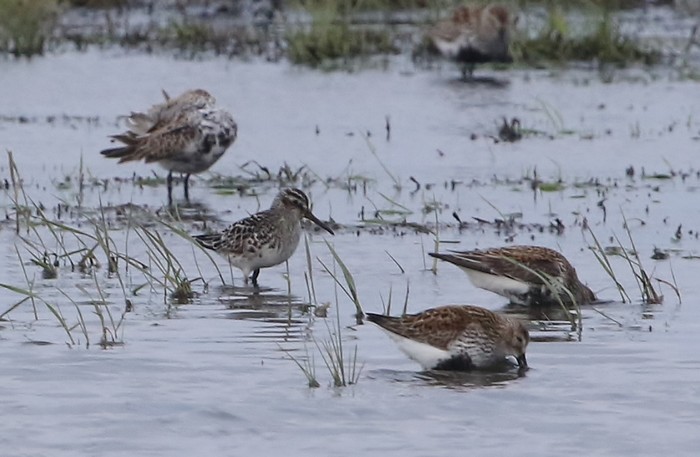
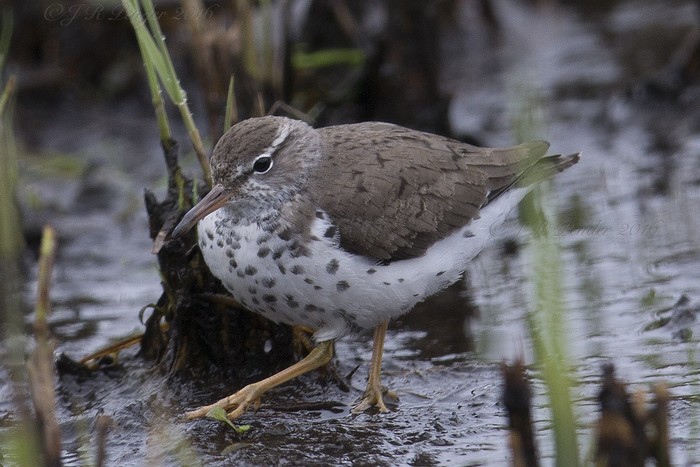
Black-winged Stilt activity was much reduced this week with only a single at Lytchett Bay, Dorset to 13th and two at Vange Marshes, Essex on 14th and 15th. Other rare waders included an American Golden Plover at Tacumshin, County Wexford on 14th and 15th, - this site enjoying a good week for plovers - with another reported at Kilcoole, County Wicklow on 15th.
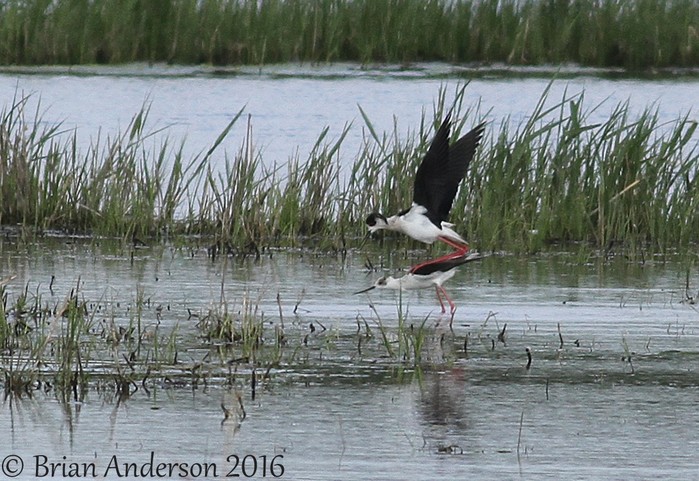
Scarce wader headlines were grabbed by a Red-necked Phalarope was at Gouthwaite, Yorkshire on 16th and a Pectoral Sandpiper at Titchwell, Norfolk on 17th but otherwise, as always in May, it was a story of Temminck’s Stints and Dotterels . The former comprised three at Titchwell, Norfolk on 11th, with one to 15th, two at Holme Pierrepont, Nottinghamshire to 13th and singles at Hale, Cheshire on 11th to 12th, Frampton, Linconshire on 13th to 14th, Brandon Marsh, Warwickshire on 14th, Old Hall Marshes, Essex and Nosterfield, Yorkshire on 15th and Belvide Reservoir, Staffordshire on 17th with two at Trimley Marshes, Suffolk the same day.
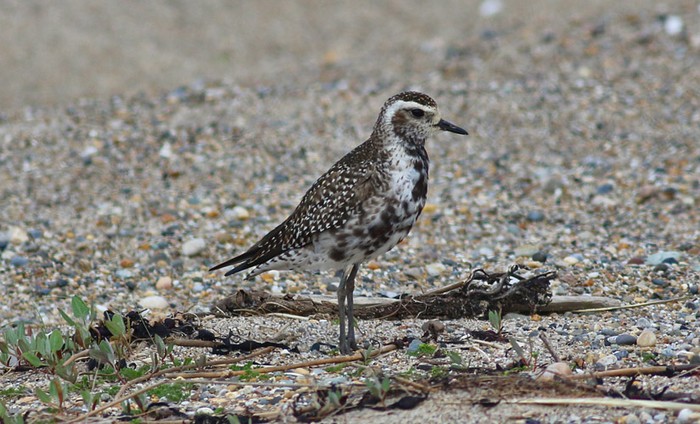
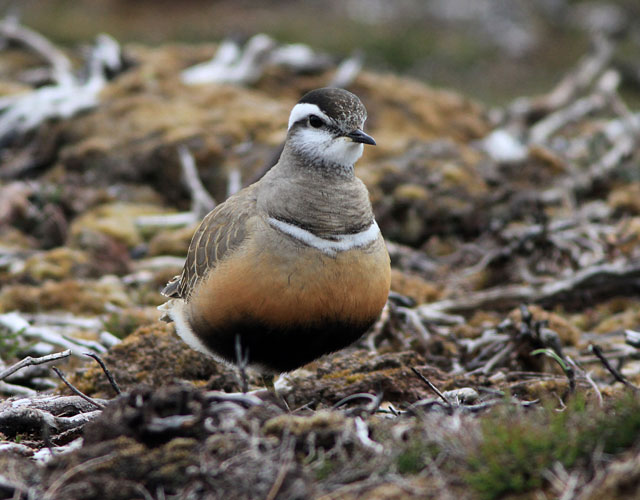
The top Dotterel site was undoubtedly Choseley, Norfolk where, as last year, significant numbers built up, reaching 28 during 12th to 14th. Elsewhere, peak counts included ten at Danby Beacon, Yorkshire on 12th to 15th and eleven there on 17th, seven at The Range, South Uist, Western Isles on 12th, six at the Great Orme, Conwy on 14th and three at Lerwick, Shetland on 13th and at Carnethy Hill, Lothian on 11th to 12th. Elsewhere two were at Flamborough, Yorkshire and Balemore, North Uist on 12th and on Holy Island on 14th and 15th with singles on Bryher, Isles of Scilly on 11th to 16th, Loch Paible, North Uist on 11th to 12th, Blakeney Point, Norfolk on 12th and Pendle Hill, Lancashire on 14th.
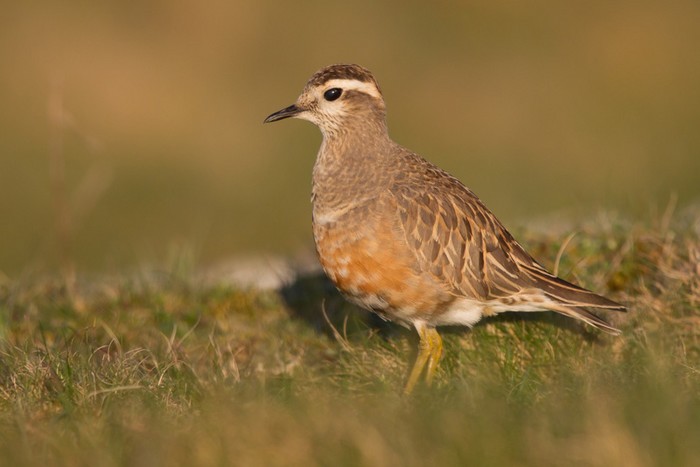
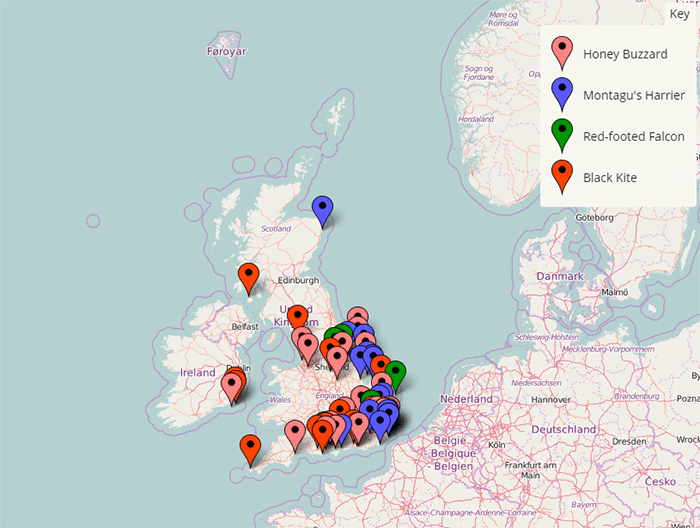
There were several female Red-footed Falcons , mostly in Yorkshire - at Thorne Moors on 11th to 12th and at Old Moor and Broomhill on 12th. Further south, other females were at Verwood, Dorset on 14th and, lingering for the crowds, at Vange Marshes, Essex on 14th to 17th.
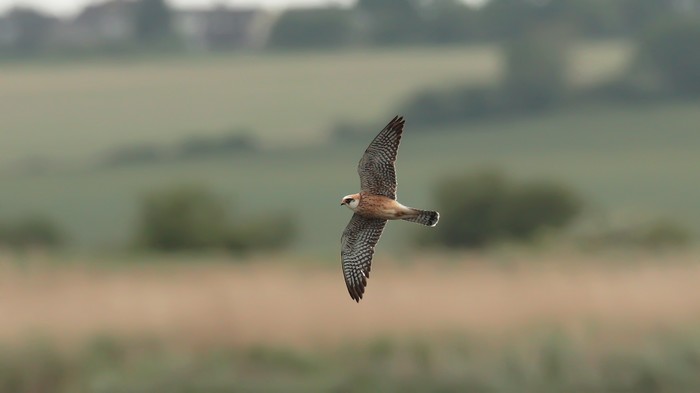
A male and a female Montagu’s Harrier were seen at Blacktoft Sands, Yorkshire whilst migrants were logged at St. Margaret’s at Cliffe, Kent on 11th and 12th, Holme, Norfolk and Dungeness, Kent on 12th, Wyberton, Lincolnshire on 13th, Spurn, Yorkshire and Gibraltar Point, Lincolnshire on 14th and Wateringbury, Kent on 16th. Pallid/Montagu’s Harriers were at Hayling Island, Hampshire and Bradwell, Essex on 15th.
Black Kites were also well to the fore - at Hodbarrow, Cumbria and Machrihanish, Argyll on 11th, Durlston Country Park, Dorset and Tacumshin, County Wexford on 14th, St. Margaret’s at Cliffe, Gillingham and Grove Ferry, all Kent, Ashington, Sussex and North Tuddenham, Norfolk on 15th and South Slob, County Wexford on 15th and 16th.
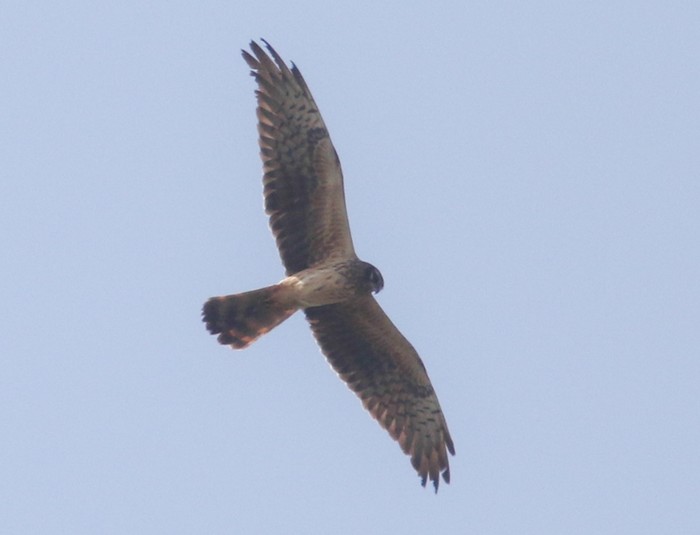
Honey Buzzards were at Christchurch Harbour, Dorset and Pipps Ford, Suffolk on 12th, Fishers Green, Essex, Brighton, Sussex and Stodmarsh, Kent on 13th, Durlston Country Park, Dorset, Sheppey, Kent and Altcar, Merseyside on 14th, Pegwell Bay, Kent, Lound, Nottinghamshire, Orcombe Point, Devon, Bempton, Yorkshire, Whitstable, Kent, Theddlethorpe, Lincolnshire, Southwick, Sussex and North Foreland, Kent on 15th, Runcorn, Cheshire on 16th and two over Stapleford, Nottinghamshire and one over Sandwich Bay, Kent on 17th.
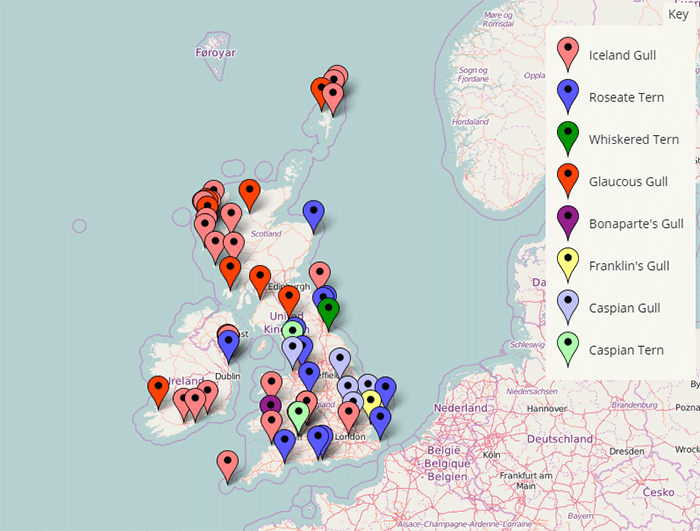
The rarest gull of the week was a first-summer Franklin’s Gull at Abberton Reservoir, Essex on 11th to 16th, only the fourth for the county after birds in April and December 2000 and, more recently, in November 2009. The only other Nearctic Gull reported was the first-summer Bonaparte’s Gull still at Llanelli, Camarthenshire to 16th.
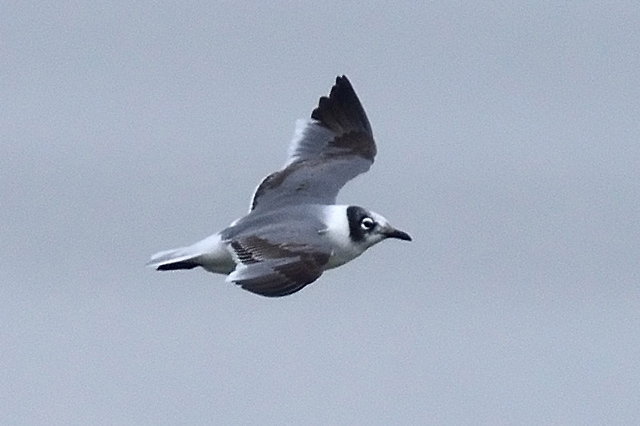
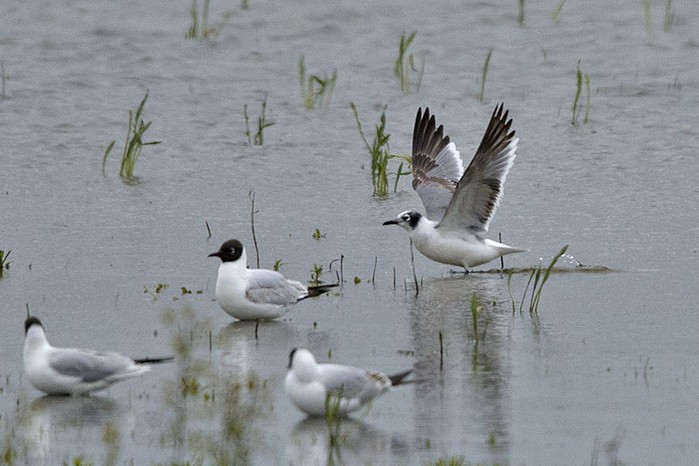
A flurry of Arctic gulls remained, however. Nine Glaucous Gulls were noted, all in the far north or west - at Troon, Ayrshire on 11th, Blennerville, County Kerry to 15th, North Uist, Western Isles on 11th to 15th, Ullapool, Highland on 13th to 16th, Benbecula, Western Isles on 13th, Esha Ness, Shetland on 15th and Cruisetown Strand, County Louth, Islay, Argyll and Bowness, Cumbria on 16th.
By contrast, Iceland Gulls were more scattered. In the north and west birds were at Clogher Head, County Louth on 11th, North Uist, Western Isles on 12th to 17th, St. Mary’s, Isles of Scilly on 12th and 14th, Inner Farne, Northumberland on 12th, Aberystwyth, Ceredigion and two at Ring Strand, County Cork on 13th, Unst, Shetland on 14th and 17th, Cruisetown, County Louth on 15th, Whalsay, Shetland, Tiree and Mull, both Argyll, and Barra and Harris, both Western Isles, on 16th and Skye, Highland on 17th. Further south and east, singles were at Barnes, London on 12th, Epney/Longney, Gloucestershire on 12th to 16th and at Rillage Point, Devon on 14th.
As is normal in May, Caspian Gulls were few and far between, the only ones reported being at Norton Disney Quarry, Lincolnshire on 11th, Paxton Pits, Cambridgeshire on 11th and 15th, Amwell, Hertfordshire on 12th, Crosby, Merseyside on 14th and 15th and three at Great Livermere, Suffolk on 15th.
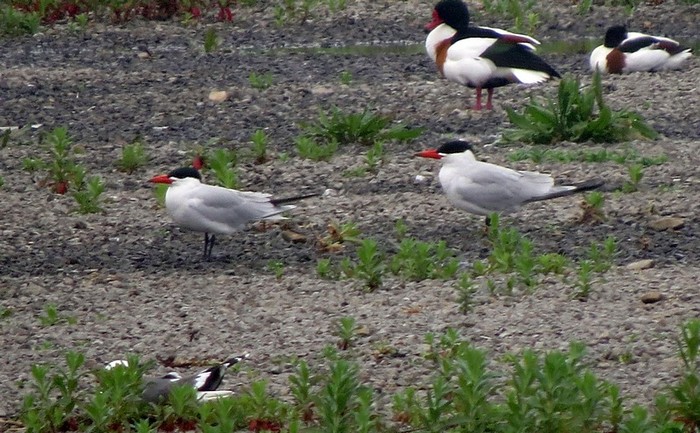
The best terns were two majestic Caspian Terns at Portbury, Somerset on 11th, one of which was reported to be wearing a Swedish colour ring. This is a rare bird indeed in Somerset, these two birds representing only the fourth record ever following birds at Bridgwater Bay and Durleigh Reservoir in July 1977, Chew Valley Lake in August 1988 and Tealham Moor in April 1995. Another passed Fleetwood, Lancashire on 12th, only the seventh for this county.
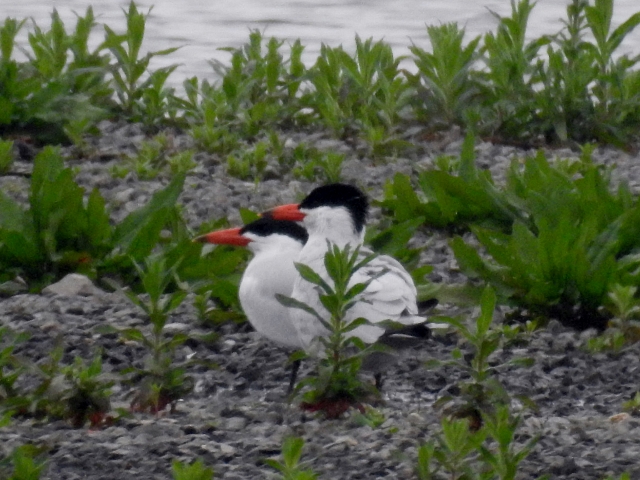
On the other side of the country, the two Whiskered Terns remained at Saltholme, Cleveland to 17th. White-winged Black Terns also made an appearance with singles at Draycote Water, Warwickshire on 11th, Benbecula, Western Isles on 12th to 14th and Deeping St. Nicholas, Lincolnshire on 14th whilst two were at the Nene Washes, Cambridgeshire on 14th.
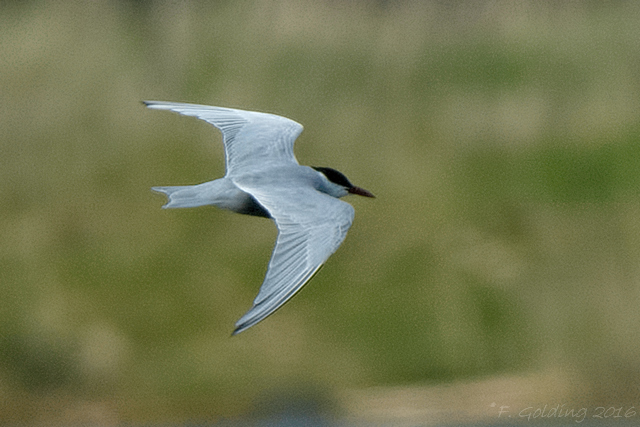
Roseate Terns were widely scattered - at Belvide Reservoir, Staffordshire on 11th, Dawlish Warren, Devon on 12th, Heysham, Lancashire, Minsmere, Suffolk, Saltholme, Cleveland, Hengistbury Head, Dorset and Pennington Marshes, Hampshire on 13th, Whitburn, Durham and the Ythan Estuary, Aberdeenshire on 15th and Pennington Flash, Lancashire on 17th.
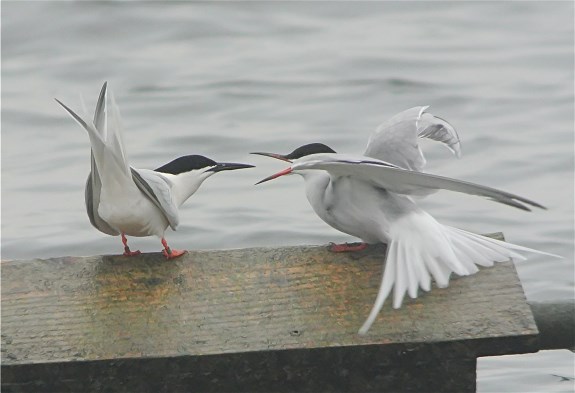
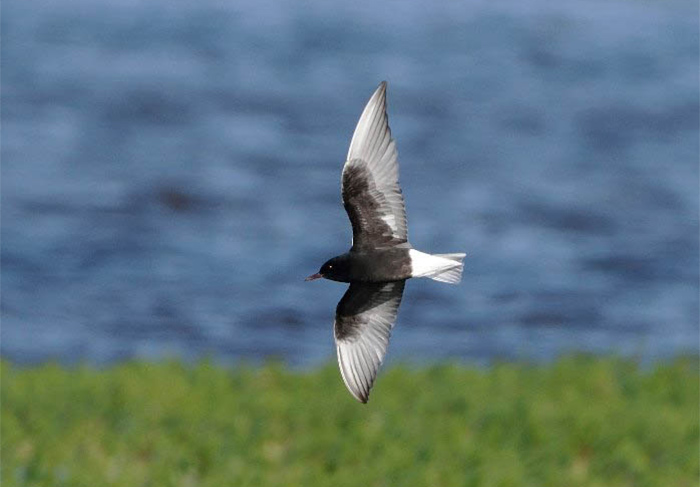
The best swift was a somewhat unseasonal Pallid Swift lingering for ten minutes over the west end of Blakeney, Norfolk on 12th. Somewhat counter-intuitively, May is not a good month for this species. The famous first Pallid Swift for Britain, at Stodmarsh, Kent was on 13th to 21st May 1978 but since then there have only been a further ten birds in May and this is the first Norfolk record for the month. Also in Norfolk, an Alpine Swift was over Framingham Earl on 11th.
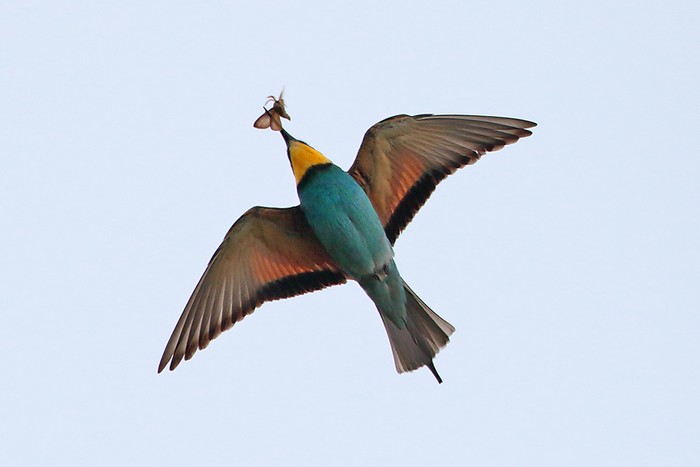
Lodmoor, Dorset hosted a Bee-eater on 14th (reported also at Portland) and it or another was at Sherborne, also Dorset, the same day. The most well-watched (and photographed) Bee-eater, however, was the unusually long-staying and often obliging individual at Winterton and East Somerton, Norfolk from 11th to 16th.
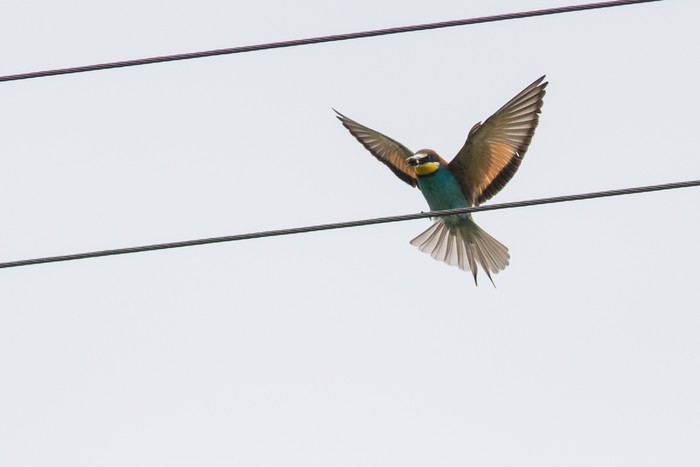
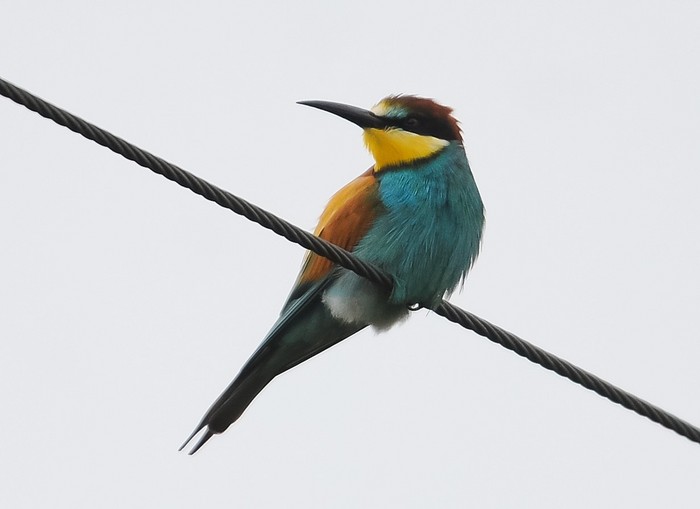
Passerine action stepped up a gear this week with a modest arrival of Scandinavia and north-east Europe-bound migrants in Scotland and north-east England.
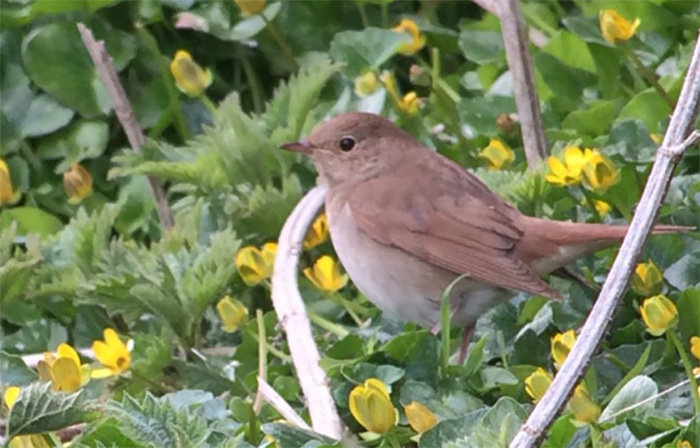
Top billing goes to a fine quartet of Thrush Nightingales - on Brownsman, Farne Islands, Northumberland on 11th, the Isle of May, Fife on 11th to 15th, Holy Island, Northumberland on 12th and finally at Easington, Yorkshire on 14th.
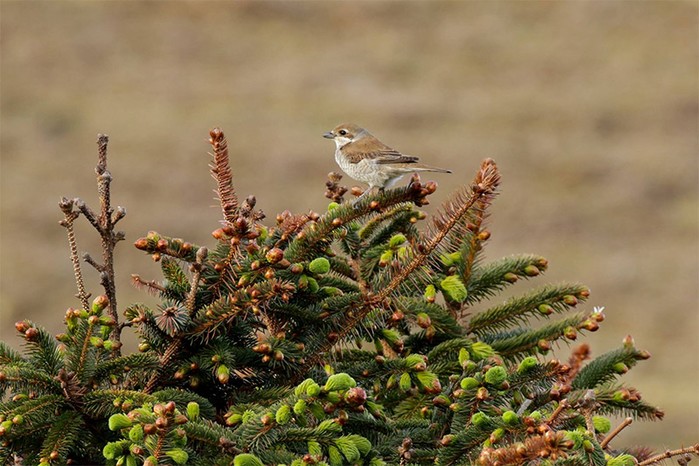
Most prominent, however, were Red-backed Shrikes , with around thirty reported. The best place was Fair Isle where up to five in a day were seen during the week. Almost all the others were on Shetland or Orkney or on north-east coasts as far south as Yorkshire. South of here there were only two - at Burnham Overy, Norfolk on 11th and Hastings, Sussex on 12th.
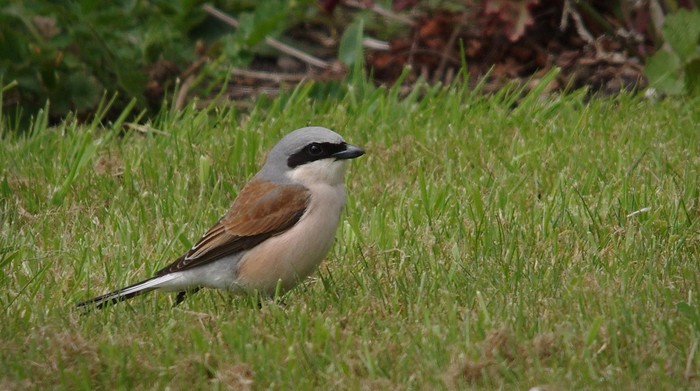
The rather more resplendent Bluethroat also put up a good showing, with an identical occurrence pattern to that of the Red-backed Shrikes. Fair Isle recorded up to four in day with two logged on Unst, also Shetland, and the Isle of May, Fife but elsewhere it was just singles. Around eighteen were recorded with the southernmost being at Flamborough Head, Yorkshire on 12th. The only ‘outlier’ was a bird, sadly found dead, at Abbeystead, Lancashire on 12th.
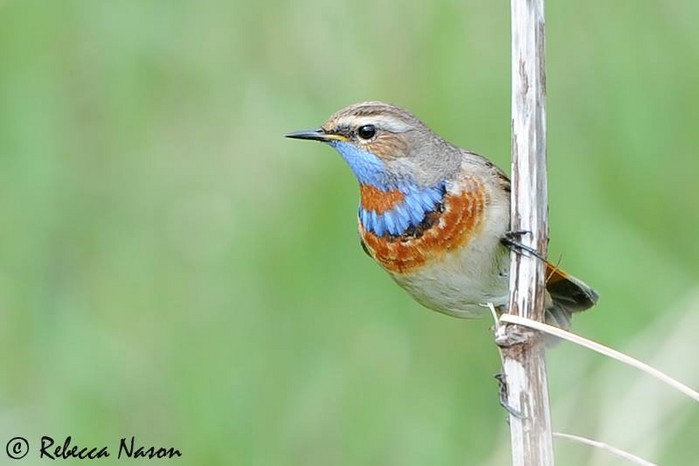
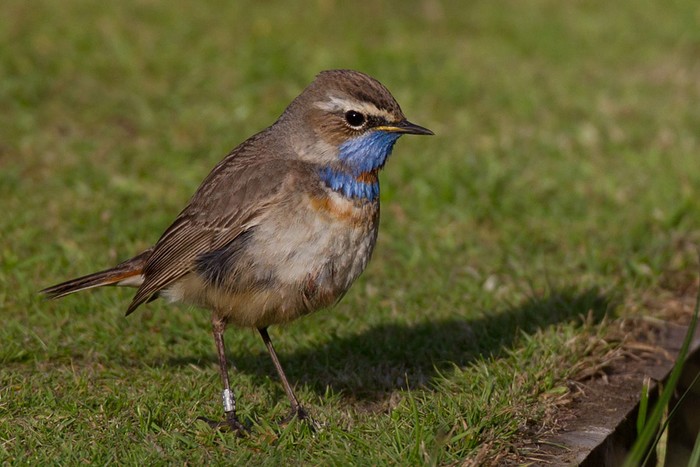
Other birds bound for the far north were Red-throated Pipits on Fair Isle, Shetland and at Deerness, Mainland, Orkney on 13th and one heard over Bryher, Isles of Scilly on 14th. Now much rarer than formerly - as evidenced by their reinstatement as a ‘BB rarity’ - this week’s trio was very welcome. Their frequent companion - the Grey-headed Wagtail - also appeared, with singles on Fair Isle, Shetland on 11th and 13th, Spurn, Yorkshire and Lunt Meadows, Merseyside on 11th, Seaton Carew, Cleveland on 11th to 15th, two at Kelling, Norfolk on 12th, one at Long Nanny, Northumberland on 13th and one at Loch of Strathbeg, Aberdeenshire on 17th. Also rare these days - and also now a ‘BB rarity’ once more - a Rustic Bunting was on Fair Isle on 13th.
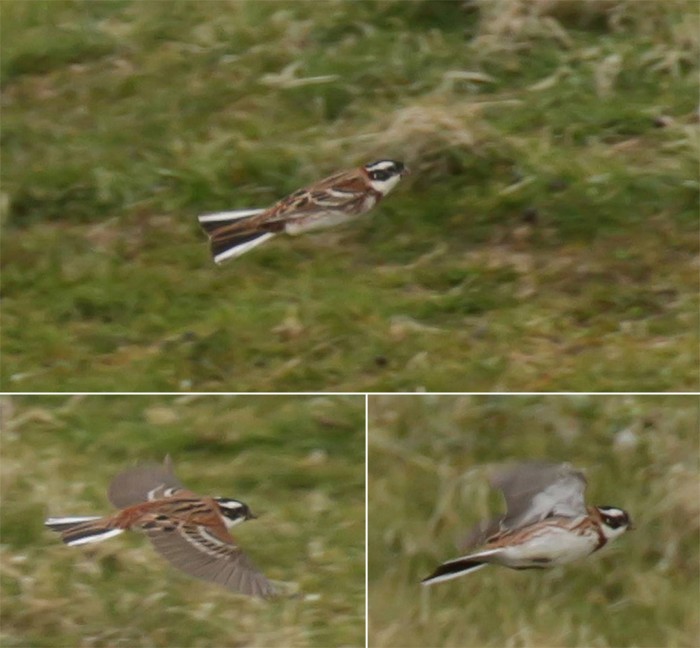
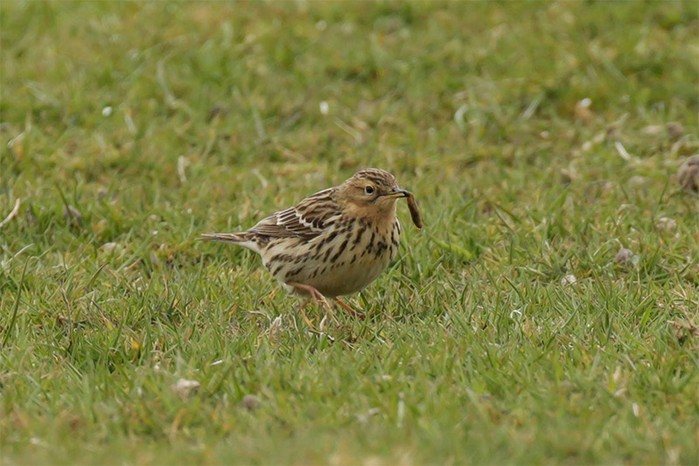
Other eastern passerines included female Citrine Wagtails on the Isle of May, Fife and briefly at Spurn, Yorkshire on 11th, a Savi’s Warbler at Greylake, Somerset on 16th to 17th and Red-breasted Flycatchers on the Isle of May on 11th to 12th, Fair Isle, Shetland on 13th and Overstrand, Norfolk on 15th and 16th. Other scarcities included Wrynecks at Frampton Marsh, Lincolnshire on 11th and 12th, Fair Isle, Shetland and Tomhaggard, County Wexford on 11th, Unst, Shetland on 12th and Bardsey, Gwynedd on 16th, Icterine Warblers at Whalsay, Shetland on 11th, Spurn, Yorkshire on 11th and 12th, two at Holy Island, Northumberland on 12th and one at Lerwick, Shetland on 16th, Ortolan Buntings on Fair Isle, Shetland on 11th and on Bardsey, Gwynedd on 15th and a Common Rosefinch on the Calf of Man on 12th.
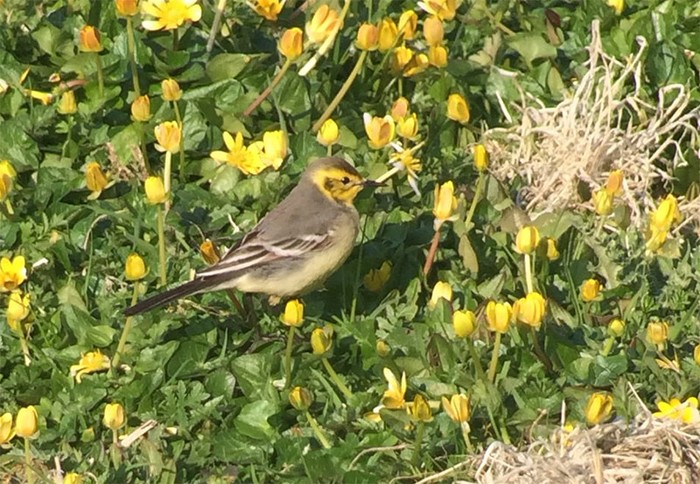
There was even a trio of Siberian passerines - a Siberian Chiffchaff on Bardsey, Gwynedd on 12th, a Dusky Warbler at Walney, Cumbria on 14th (hot on the heels of last week’s singing bird at Hickling, Norfolk) and Richard’s Pipits at Weybourne, Norfolk on 11th and Spurn, Yorkshire on 14th and 15th.
Birds from the south were headlined by Sylvia warblers, most notably a female Sardinian Warbler in the canal zone at Spurn, Yorkshire on 16th, only the fifth for Yorkshire and the second for Spurn, the last at this premier site being as long ago as June 1982. There was also a continuing run of Subalpine Warblers , each posing a teasing set of identification problems. ‘Easterns’ were identified at Mossbank, Mainland Shetland and Bardsey, Gwynedd on 11th, Skokholm, Pembrokeshire on 13th and 14th and St. Agnes, Isles of Scilly on 15th with ‘Westerns’ on the Calf of Man on 12th, at Holy Island, Northumberland on 14th to 16th and on Islay, Argyll on 16th. Unidentified birds were on St. Mary’s, Isles of Scilly on 11th and on Bryher, also Isles of Scilly, and at Red Rocks, Cheshire and Wirral on 13th.
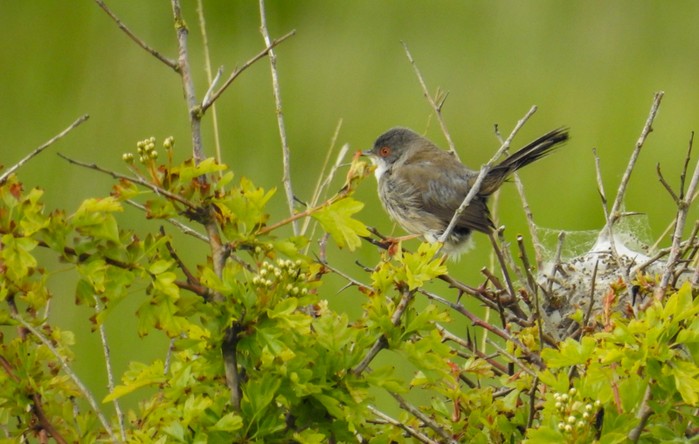
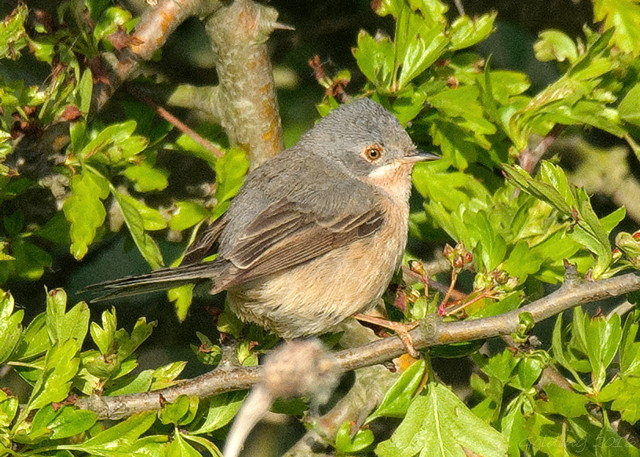
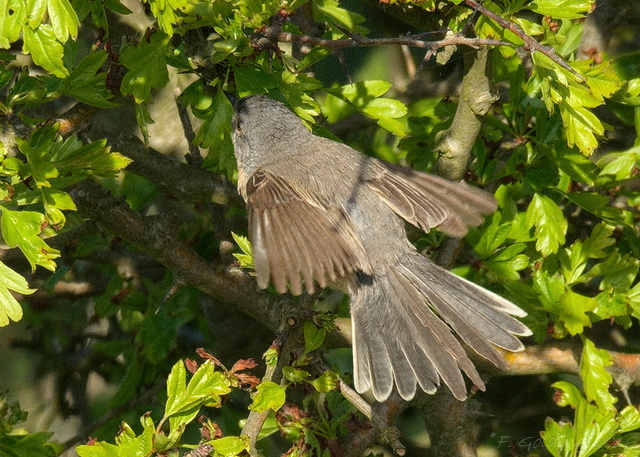
Other southern warblers included Melodious Warblers on Gugh and St. Mary’s, both Isles of Scilly, on 11th, a Western Bonelli’s Warbler emerging from the gloom at Portland, Dorset on 11th and singing Great Reed Warblers at Haverton Hole, Cleveland to 15th, on St. Mary’s, Isles of Scilly on 13th and at Paxton Pits, Cambridgeshire on 14th to 17th.
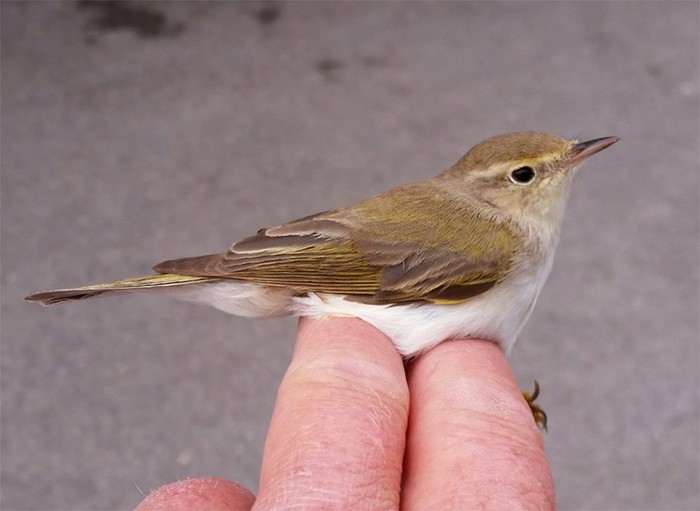
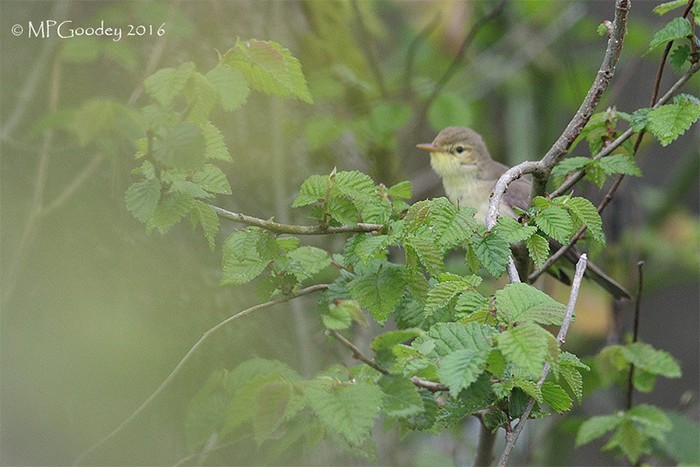
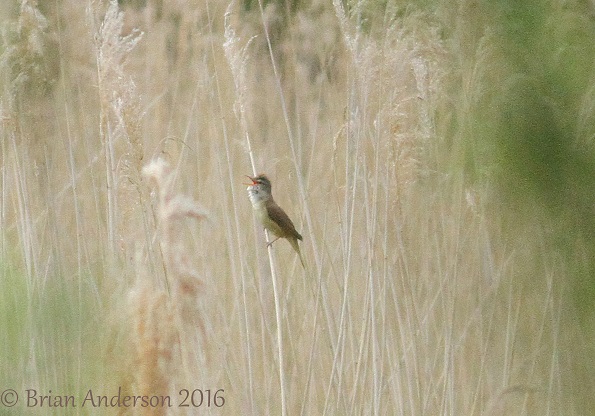
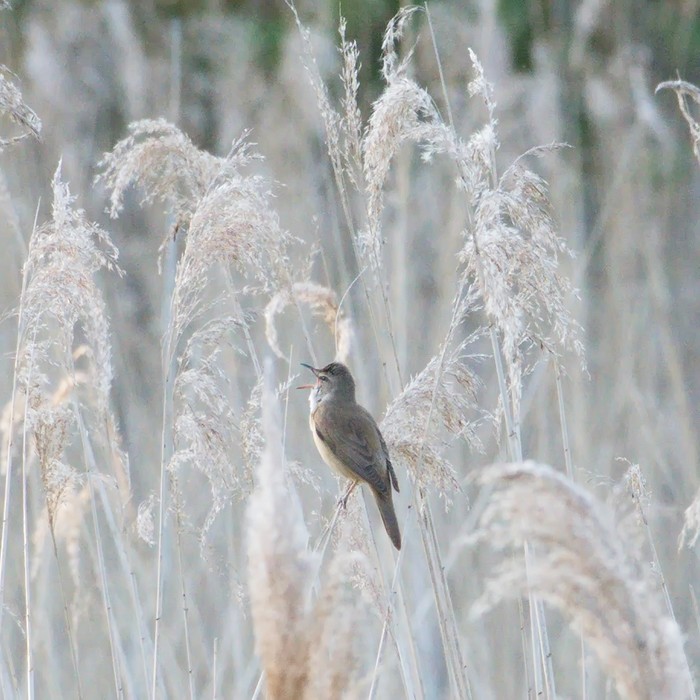
Other traditional southern ‘overshoots’ included two Red-rumped Swallows on St. Mary’s, Isles of Scilly on 11th and 12th with one to 17th, at least two at Beachy Head and one at Selsey Bill, Sussex on 12th and others at Lodmoor, Dorset on 14th and Brayford Pool, Lincolnshire on 16th.
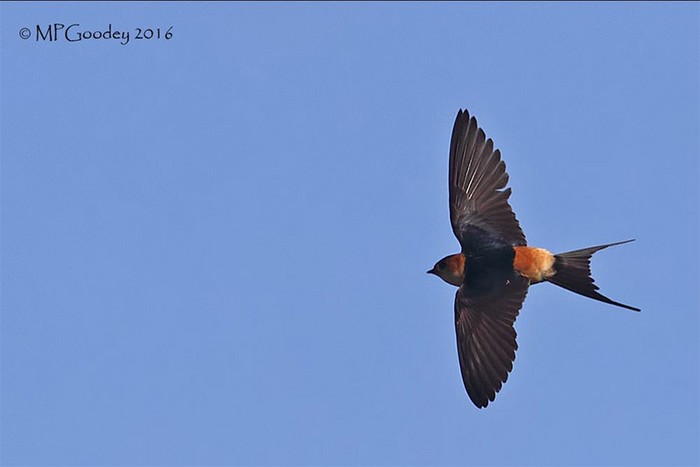
Also from the south were the candidate Spanish Wagtail on Skomer, Pembrokeshire (still present to 12th), Short-toed Larks at Portland, Dorset, Holy Island, Northumberland and Knockadoon Head, County Cork, all on 12th, and Woodchat Shrikes on Bryher, Isles of Scilly on 11th to 13th with one on St. Mary’s on 12th, Fair Isle, Shetland on 11th to 16th, Pendeen, Cornwall on 12th and Slapton, Devon on 15th.
The list of traditional spring fare was supplemented by at least ten Hoopoes , most in typically obscure inland southern English locations but one was at Out Newton, Yorkshire on 13th and a particularly far-flung individual was at Inverpolly, Highland on 11th. There were also eleven Serins as far north as Yorkshire and eleven Golden Orioles , almost all in the Southwest and including no fewer than four on Bryher, Isles of Scilly on 11th.
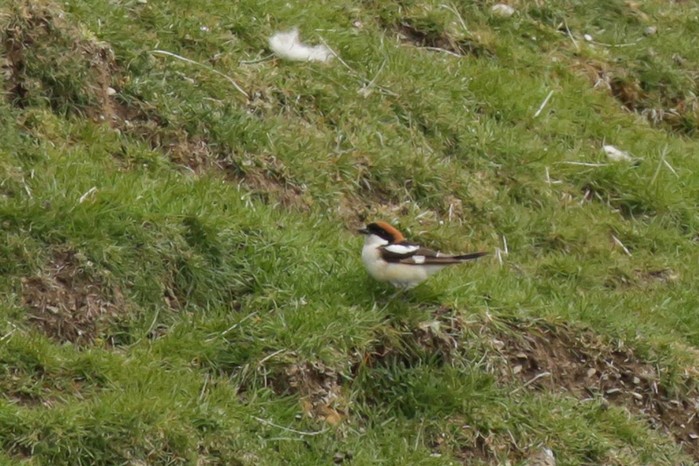
Perhaps the most surprising passerine report of the week concerned a female Two-barred Crossbill with forty Common Crossbills at Cragside Country Park, Northumberland on 11th.
This must be one of the busiest spring weeks ever, delivering a long list of entirely unpredictable birds. Trying to predict next week’s fare therefore seems a little futile but the third week of May is about as good on paper as it gets, eclipsed only by the last week of the month for the rarest of the rare. The week ahead looks to be dominated by winds from the west, however, so the pace of arrival of European birds will surely slow. It won’t be extinguished, however, and of course an American sparrow or, better still, a wood-warbler could be just around the corner. A good bet for the coming days would be further Lammergeier action in the Southwest and another ‘wild card’ contribution from the Northern Isles. Of course the dapper summer plumage Great Knot , in residence on Texel, the Netherlands this week, might just hop over the North Sea……….
Andy Stoddart
18 May 2016
Please note: we put a lot of time and effort into sourcing and and producing the images, videos and graphics for each roundup. Some of you (probably Apple users) may notice some photos etc. that appear to have incorrect captions. Please try refreshing the page as they are correcty captioned. If after a refresh they are still showing the incorrect captions then please email us
Contributors websites

















